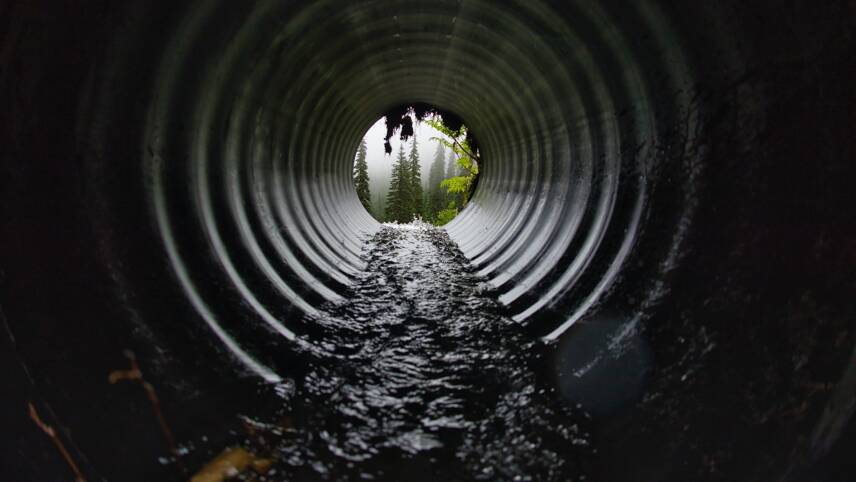You’ve reached your limit!
To continue enjoying Utility Week Innovate, brought to you in association with Utility Week Live or gain unlimited Utility Week site access choose the option that applies to you below:
Register to access Utility Week Innovate
- Get the latest insight on frontline business challenges
- Receive specialist sector newsletters to keep you informed
- Access our Utility Week Innovate content for free
- Join us in bringing collaborative innovation to life at Utility Week Live

Utility Week Innovate and industry experts from the likes of Thames, Northumbrian and Yorkshire Water dived into challenges posed by managing tens of million data points across vast networks with ever-changing technology as industry-wide CSO targets loom.
Combined sewer overflows (CSOs) have been subject to increasingly intense public and political scrutiny for more than a year amid greater awareness of their use and potentially adverse environmental impact. Most recently, the Wildlife and Countryside Link (WCL) called for increased investment at the next price review to curtail their use and levels of river pollution, for instance.
As reported by Utility Week, the alliance of environmental groups and stakeholders’ Blueprint for Water report outlined the need for an effective enforcement regime as the first step in cutting pollution and stressed that a transparent, well-funded, monitoring regime would drive compliance up and pollution down. The group also urged government to set a wastewater target in the upcoming Environment Bill to encourage water companies to phase out CSO usage.
This news came off the back of a swirling current of scrutiny and opposition which had been in motion for much of the past 12 months.
In November 2020, for instance, Surfers Against Sewage demanded legally-binding sewage emission reduction targets and further transparency from water companies on discharges into rivers and bathing water.
Its Water Quality Report found 2,941 CSO discharge notifications between 1 October 2019 and 30 September 2020 – and the number of notifications falling year-on-year for the majority of firms – the group stated that water companies were still “discharging sewage at alarming rates, polluting the environment, and risking our health”.
In the time since, a public outcry against the use of CSOs led to a private members bill motioned by Philip Dunne, chair of the Environmental Audit Committee. Although it did not complete the passage to law, several of its focal points were added to the Environment Bill – including water companies, the EA and Secretary of State being required to report on the use of overflows.
More recently still, David Black – then interim chief executive of Ofwat – wrote to water and sewerage companies in June 2021 to underline the importance of monitoring storm overflows, asking industry leaders to gain a “full and accurate picture” of performance and stressed the importance of actively considering the environmental impact of CSOs and implementing clear and timely strategy to address shortcomings.
With this in mind, Utility Week Innovate asked a number of water companies to provide updates on their CSO performance and policies over the past 12 to 18 months, and outline what steps are being taken to protect the environment.

The state of play: ongoing work and existing targets
The Environment Agency (EA) has stressed that all overflows must be covered by event duration monitors (EDM), to track how often and for how long they are used, by December 2023.
Generally speaking, the water companies which provided updates on their CSO and network monitoring progress explained that existing regimes offered more than 95 per cent coverage from sensors and EDMs – with aims to reach 100 per cent within the next few years as they worked to scale back the role and repercussions of CSO use.
“We have invested heavily in reducing the impact of our CSOs, are continuing to work on further improvements,” James Harrison, head of wastewater asset management at Yorkshire Water says. “We have increased monitoring significantly, with 96 per cent coverage and reporting in 2020 and an aim of 100 per cent coverage by 2023.
“Current monitoring provides 80 million data points and as a business our focus is on the reporting and validation of data to improve data quality, which will continue to improve as understanding of the data improves.”
James MacLean, technical policy manager at Northumbrian Water – whose network consists of nearly 30,000 km of sewers – explains that the firm is in the midst of upgrading and deploying monitoring devices as it works toward a target of 100 per cent CSO coverage in early 2022.
“Our strategy since 2005 has been to install sewer level monitors at all our network CSOs for pollution prevention and operational reasons,” he explains. “They are typically battery-operated monitors that communicate daily unless triggered by a warning level.”
Likewise, Wessex Water – which treats and supplies drinking water to roughly 1.2 million people and provides sewerage services to 2.5 million – is focused on upgrading its network infrastructure. In fact, Jody Knight, asset technology manager at Wessex, explains that having installed 125 EDMs last year despite the Covid pandemic – 55 more than their target of 70 – they’re on course to provide 100% coverage of EDMs on storm overflows to the environment by March 2023.
Please login or Register to leave a comment.